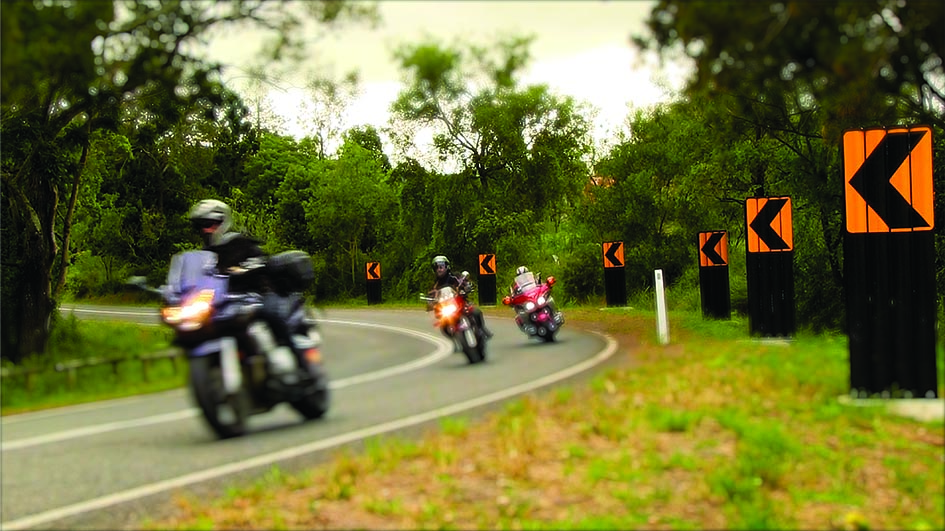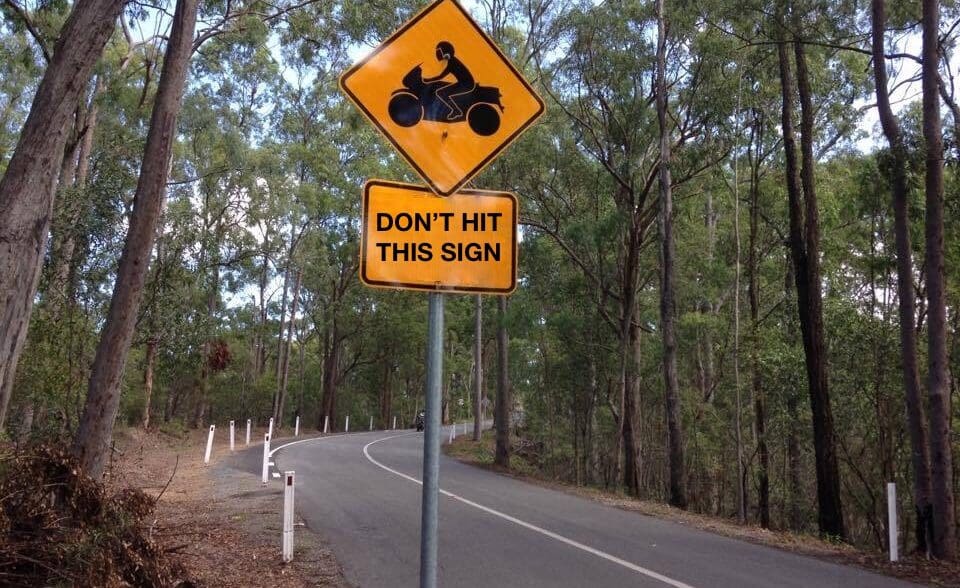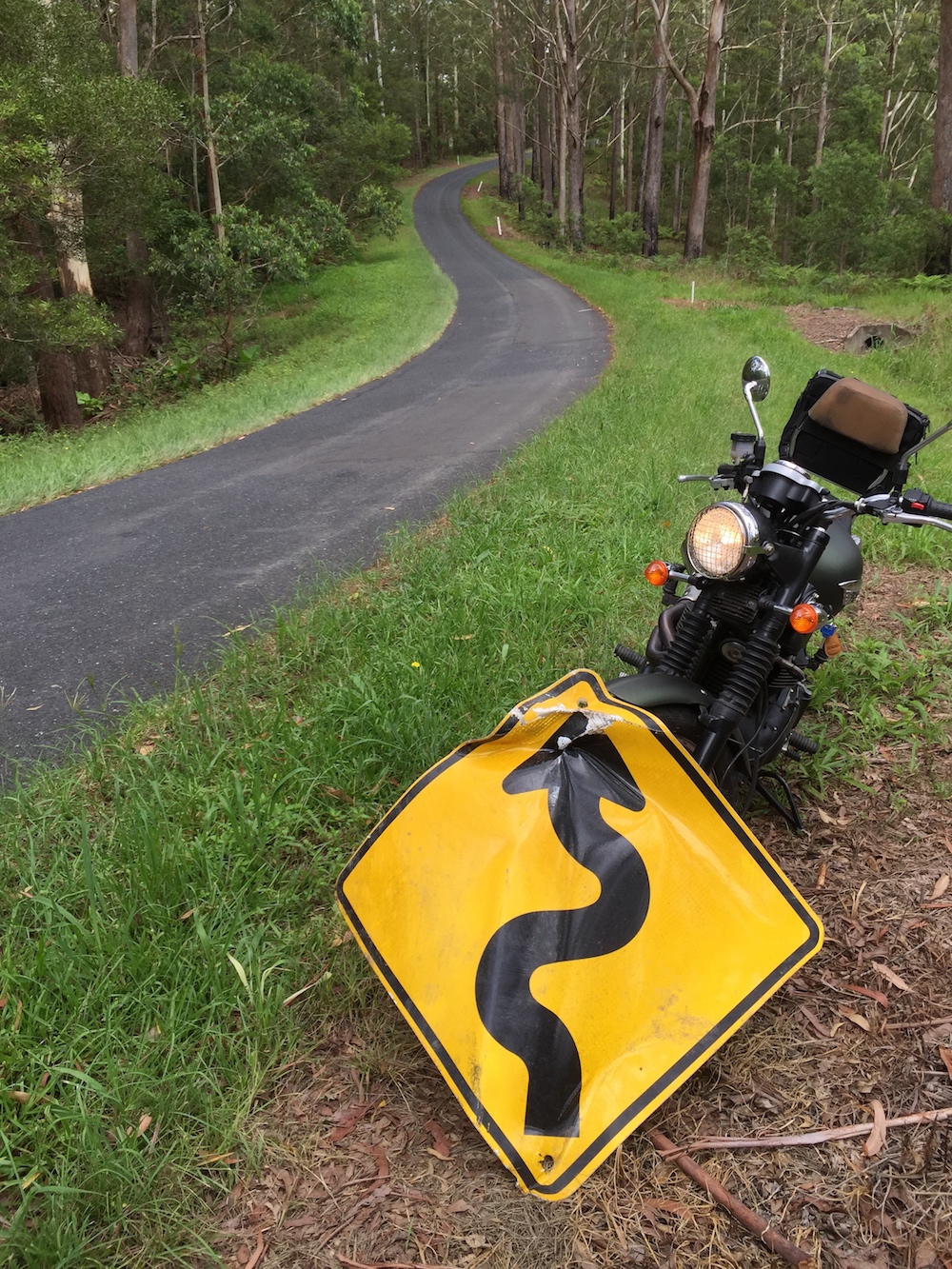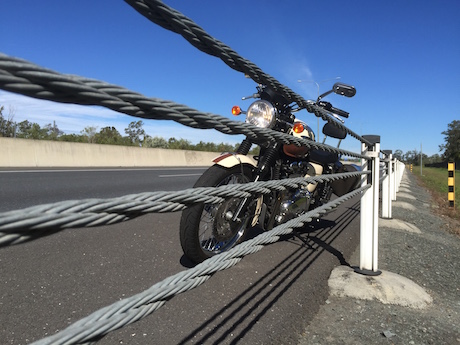A United Nations road safety report has recommended roadside hazards be removed as they are a proven cause of serious motorcycle crash injuries and deaths.
The 108-page World Health Organisation “Powered two- and three-wheeler safety” report says a motorcycle crash with a fixed roadside hazard is 15 times more likely to be fatal than a crash on the ground with no physical contact with a fixed hazard.
They also increase the severity of injuries in such crashes, it says.
Yet authorities continue to install signs on metal poles, wire rope barriers and other hazards while continuing to ignore flexible non-harming roadside alternatives such as Chevroflex signs.

It’s probably the fault of short-sighted and tight-fisted politicians who would rather reap cash from speed fines than spend money on primary safety features.
However, these signs may be more expensive in the short term, but in the long-term they don’t need fixing or replacing in a crash.
Besides, they would only need to be placed in known motorcycle “blackspot” areas, particularly on curves.
A special mention here must go to the Victorian Government which is spending $10.75 million improving eight high-risk motorcycle routes.
They are installing rub-rail protective barriers, sealing driveways and roads, improving road surfaces, upgrading signage and making “roadside improvements”. All upgrades are expected to be finished by mid-2017.
Remove all hazards
The WHO report also suggests the removable of other roadside hazards such as trees, guardrails, utility poles and drainage structures.
It says the severity of a motorcycle, scooter or powered-two- or three-wheeler (PTW) crash with a roadside object depends on the speed, impact angle, surface area of the object and the impact absorption properties of the object.
They cite a study that found roadside objects were the primary cause of fatalities and another Australian and New Zealand study presented at the 2015 Australasian Road Safety Conference that concluded that almost all roadside objects are hazardous to PTW users.
“This is mainly due to the fact that all objects have been designed for safety of cars and their occupants rather than for PTWs,” it says.
The report says creating a roadside “clear zone” would not only minimise the risk of a rider hitting a hazardous object, but also provide room for them to correct errors.
“Choice of location of roadside equipment used for lighting or signage can also have a negative impact on PTW safety,” it says.
“Guardrails and crash barriers are often used to separate vehicles from roadside hazards but the design of such devices needs to take motorcyclists into account.”
Guard rail debate
As for what is the best type of guard rail to use, the report acknowledges the debate over the abundant use of wire rope barriers.
Read about the barrier debate here.
“There is increasing evidence that the position of motorcyclists when they impact a guardrail may be more important than the type of guardrail,” it says.
They refer to an OECD report that recommends crash barriers that allow a fallen rider to slide along the surface rather than hit any specific component of the barrier such as a post.




